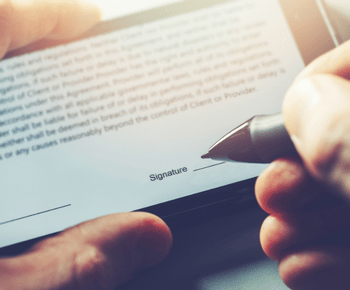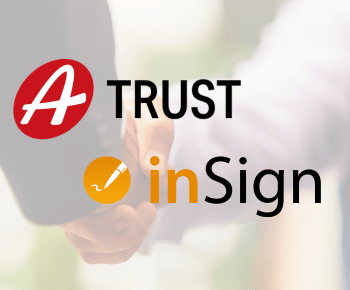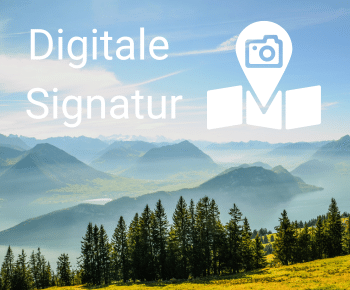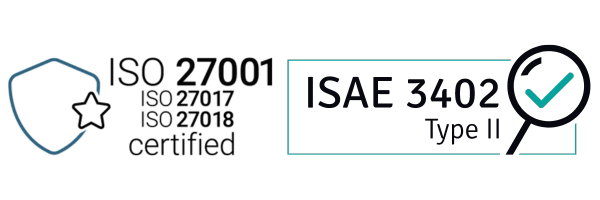
Interview with Mirko Röder
(Product Owner inSign)
An electronic signature is an alternative to a handwritten signature. But why should companies sign electronically these days? In an interview by Podcast Mittelstand, Mirko Röder (Product Owner inSign) provides exciting insights into the world of electronic signatures. In doing so, he answers the basic question of why sign electronically and also explains other exciting topics, such as the legal security and provability of electronic signatures. We have briefly summarised the core statements of this interview for you:
Why is the electronic signature useful?
There are now computers in all companies. Documents are created on them and sent electronically via the corresponding programmes. However, when it comes to signing a document, the printer is switched on, the document is printed and you switch back to analogue. Then someone has to sign and after the signature the document might be scanned again. It would be practical if you could also work digitally at this point and not have a media break. It is even worse if the person who is supposed to sign is not present. Then the document may also have to be sent by post . At some point, the document comes back and only two out of three signatures have been issued. And the process starts all over again.Is the e-signature legally valid?
Yes, there is no formal requirement for most contracts. You are free in terms of form as to issue your declaration of will. This can happen verbally, in writing on paper or electronically.Is the electronic signature also provable?
A handwriting expert from the State Criminal Police Office in Munich has confirmed the provability of the digital signature. According to this, if it has to be proven in court, the signature can be clearly assigned to a person. With inSign’s advanced electronic signature, not only the signature image but also biometric characteristics such as writing speed, pauses and direction are recorded.Is there a legal framework for the issue?
The legal framework in the EU is the so-called eIDAS Regulation. In this, two signature types, in particular, are highlighted because they have especially high requirements. These are, on the one hand, the previously mentioned advanced electronic signature and, on the other hand, the qualified electronic signature. Both signature types have as a mandatory requirement that the signature can be assigned to the signatory.How does e-signature work in practice?
A document to be signed is simply uploaded to the inSign software. As a rule, a signature field must be set first because the signature data is stored in this field. The software automatically recognises if the document does not yet contain one. The signature field can simply be dragged & drop to the appropriate place and it can be signed electronically immediately when working on a touch device. If this is not the case, the signature can also be redirected, e.g. to a smartphone using an SMS. After clicking on the link, sign with a pen or finger. The document can then be archived. The procedure just described is an advanced electronic signature, which is the best choice for most use cases.What should be considered when choosing a signature provider for companies?
In principle, care should be taken when uploading personal or particularly sensitive data to the internet where it is stored. It is important that the data is stored in Germany or in the EU, because that is the only place where the strict data protection standard applies.The decisive tip from Mirko Röder
The decisive tip is somehow quite boring. I can only encourage everyone to give it a try. Working with inSign offers enormous time savings. It’s not just about saving paper, but working faster, better, easier and more sustainably. Furthermore, switching between digital and analogue processing is avoided.
- Feel free to watch the entire video (only available in German):

Play Video about Mirko Röder iS2 AG - Warum elektronisch unterschreiben?
Ready to try it out? Or do you still have questions? Get in touch with us.

About the author
Christina Detling – Online Marketing Specialist
Christina has been working at inSign for over four years and is happy to pass on her knowledge of electronic signatures and digitisation.
- Further articles
More on the topic of digital signatures



